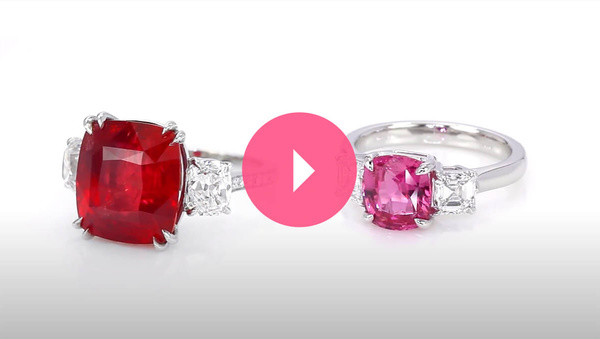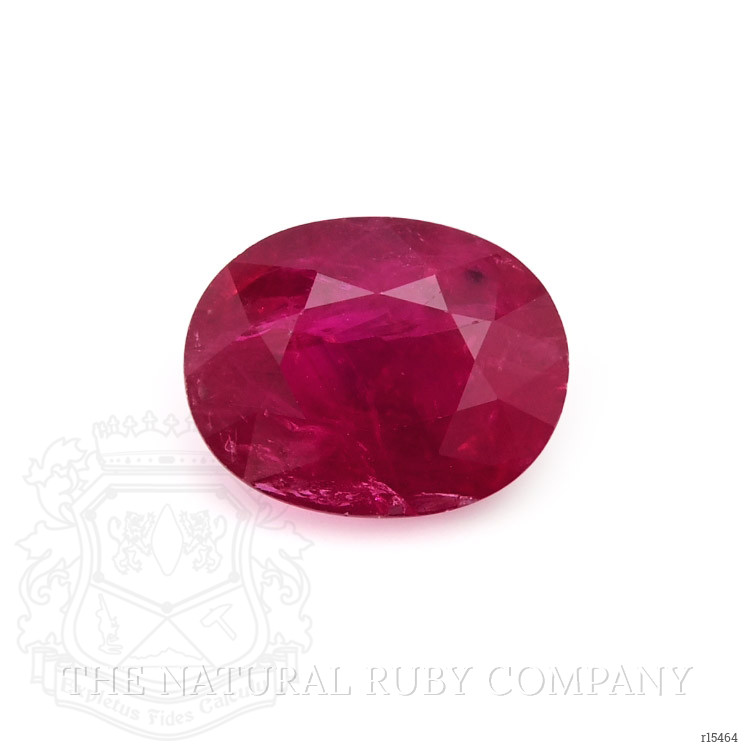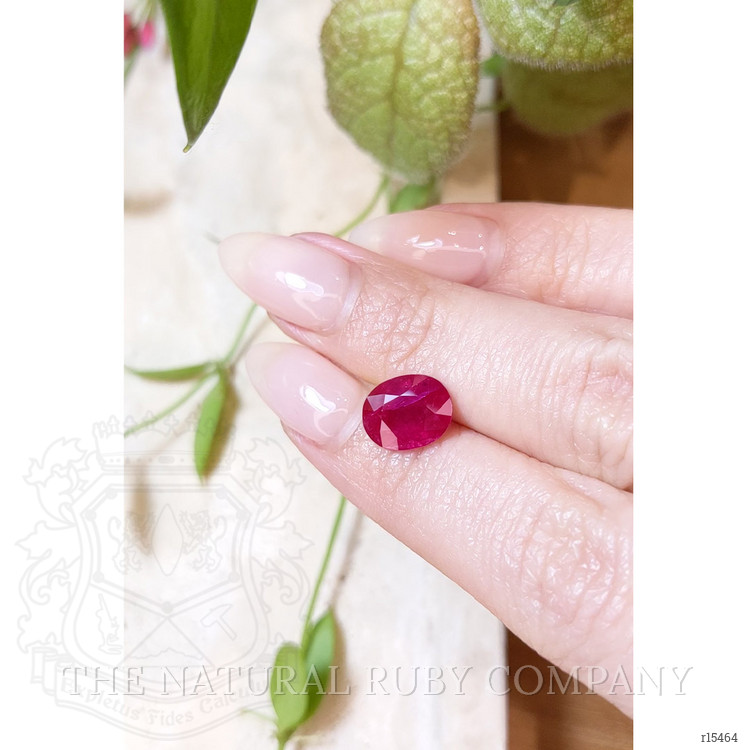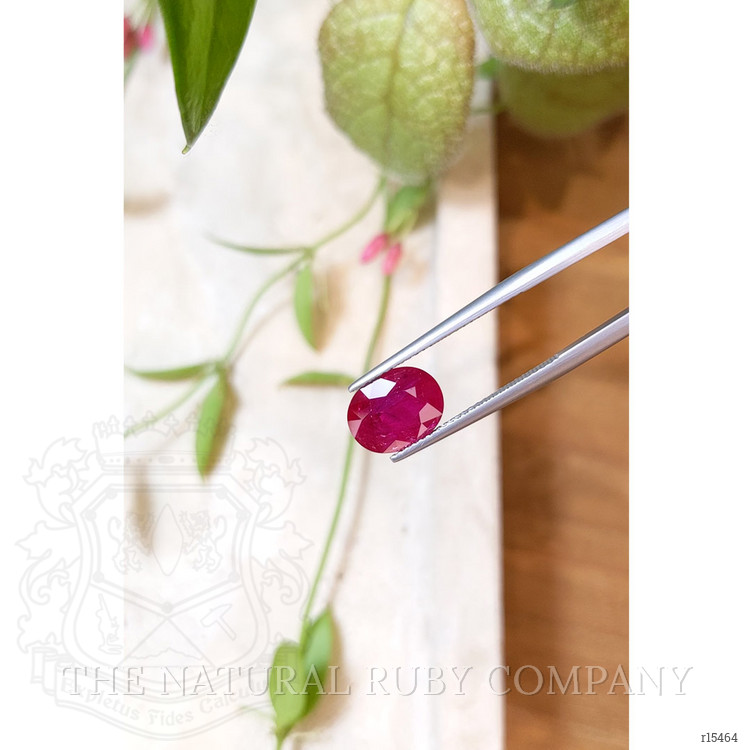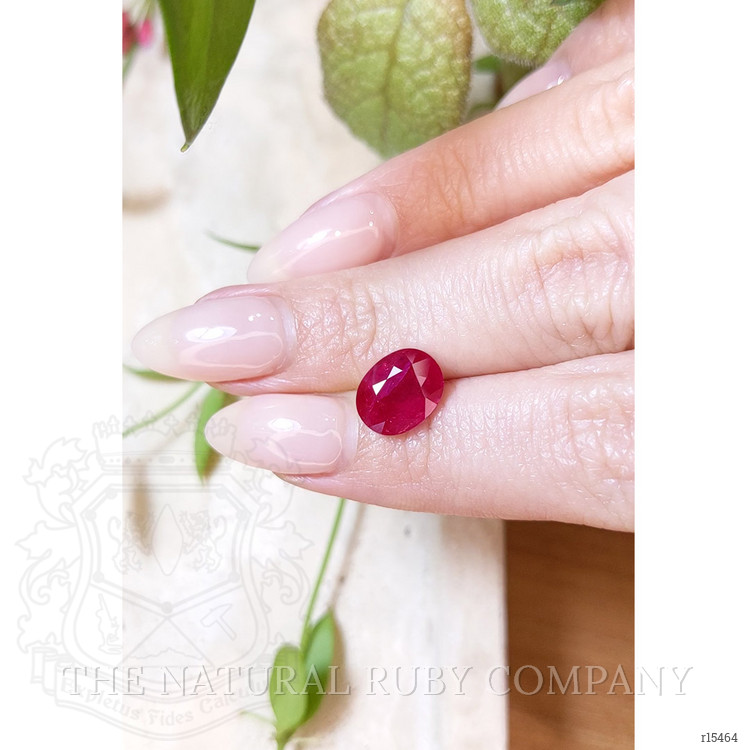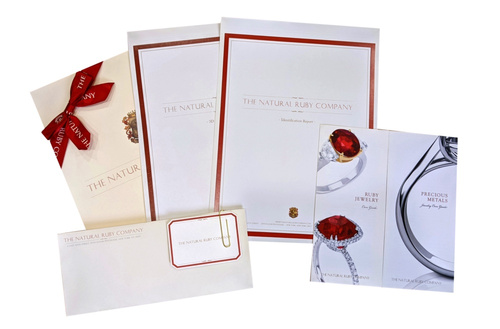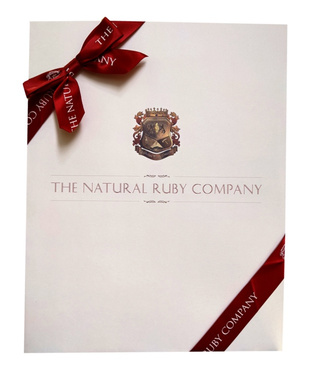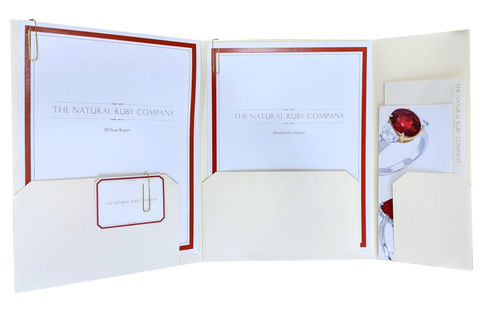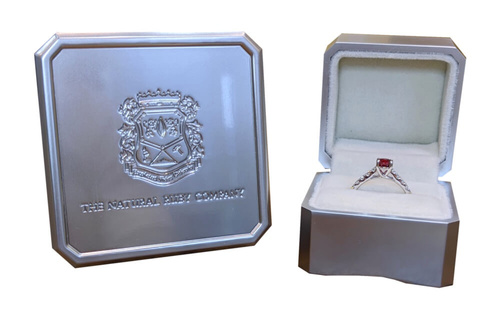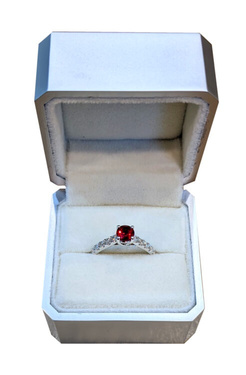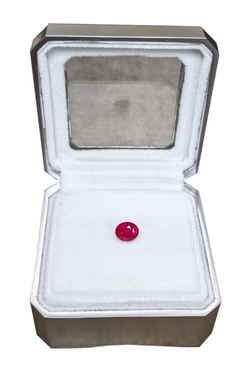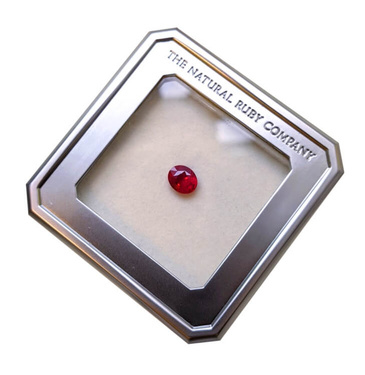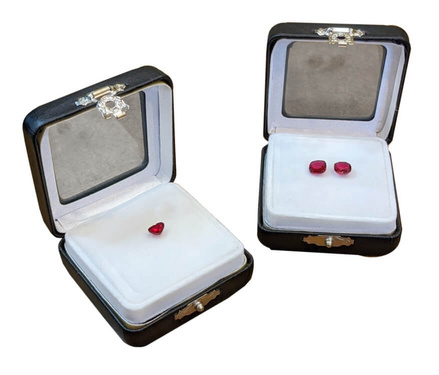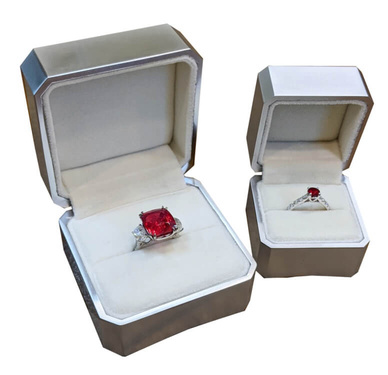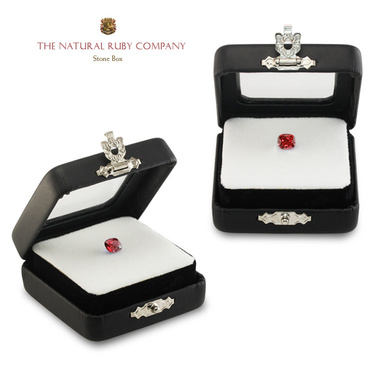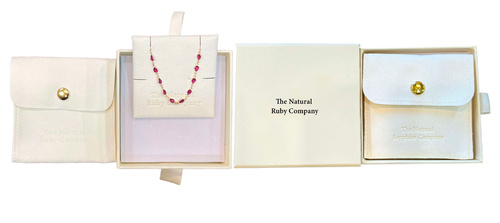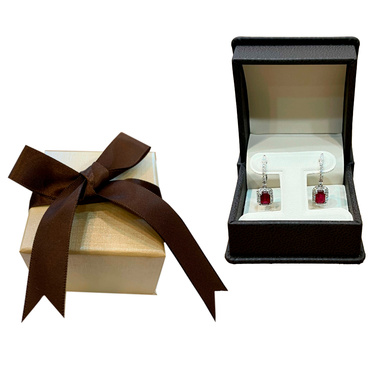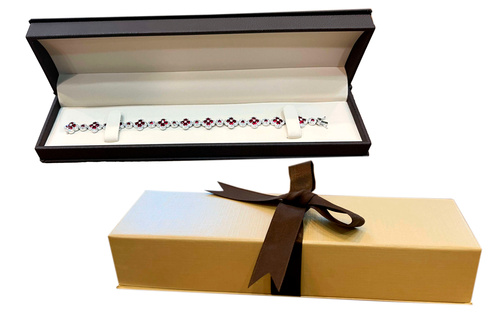- Stone14
- Reports3
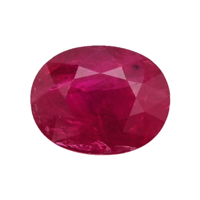

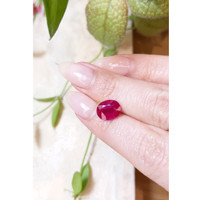
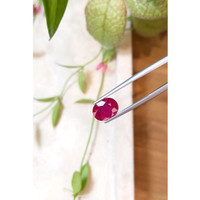
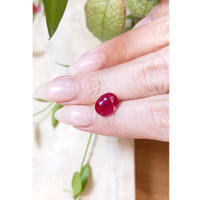
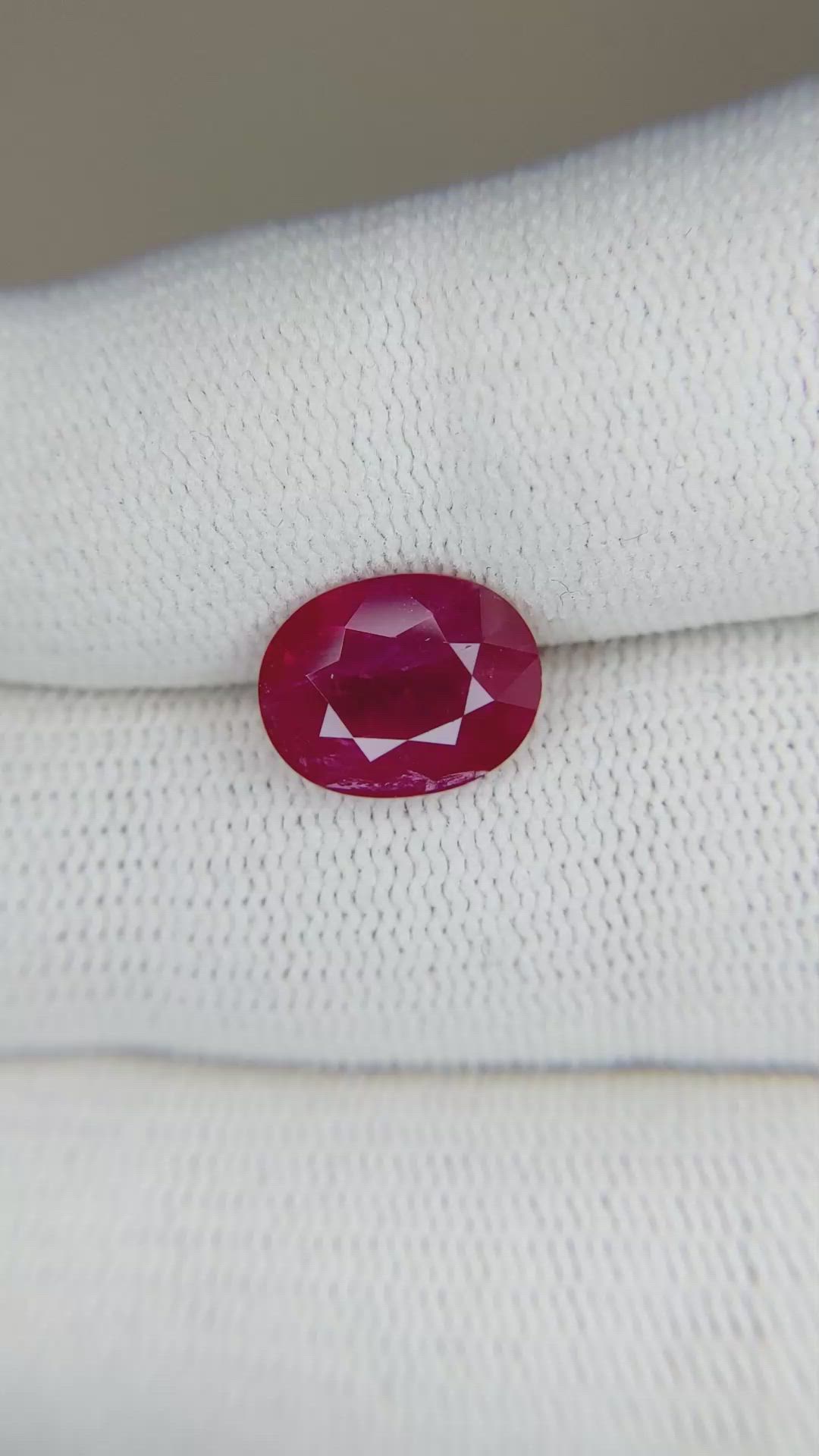
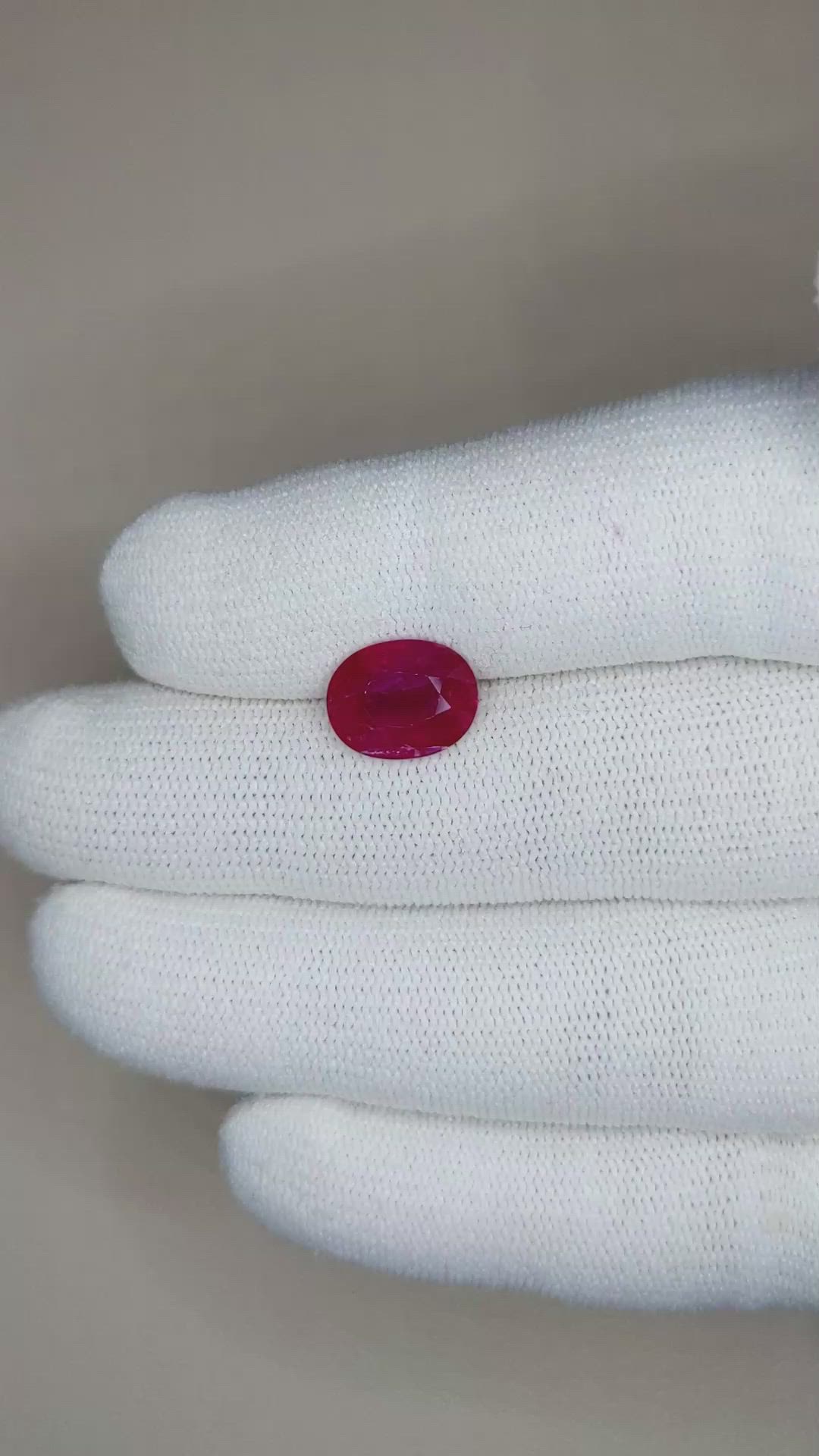
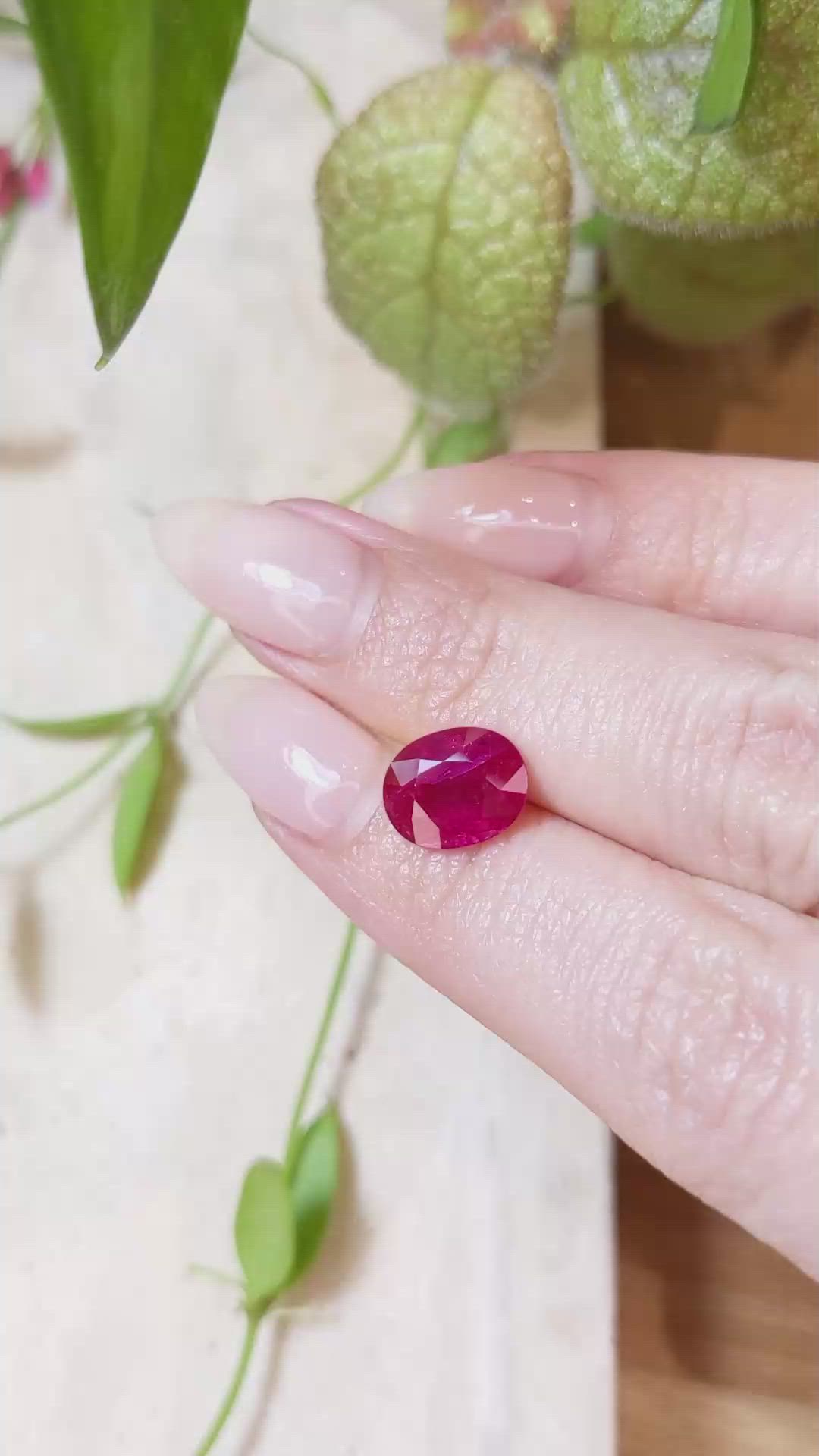
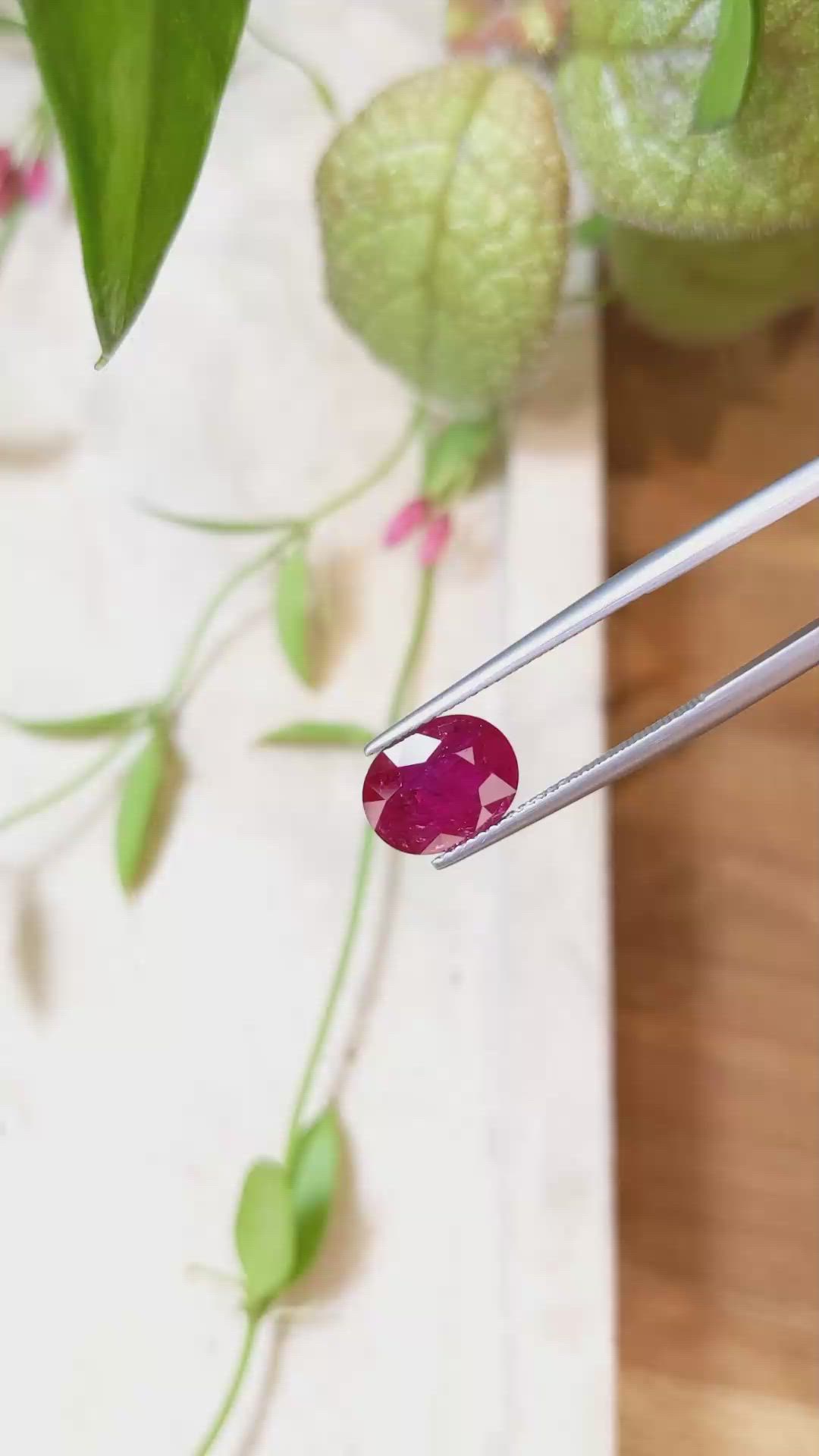
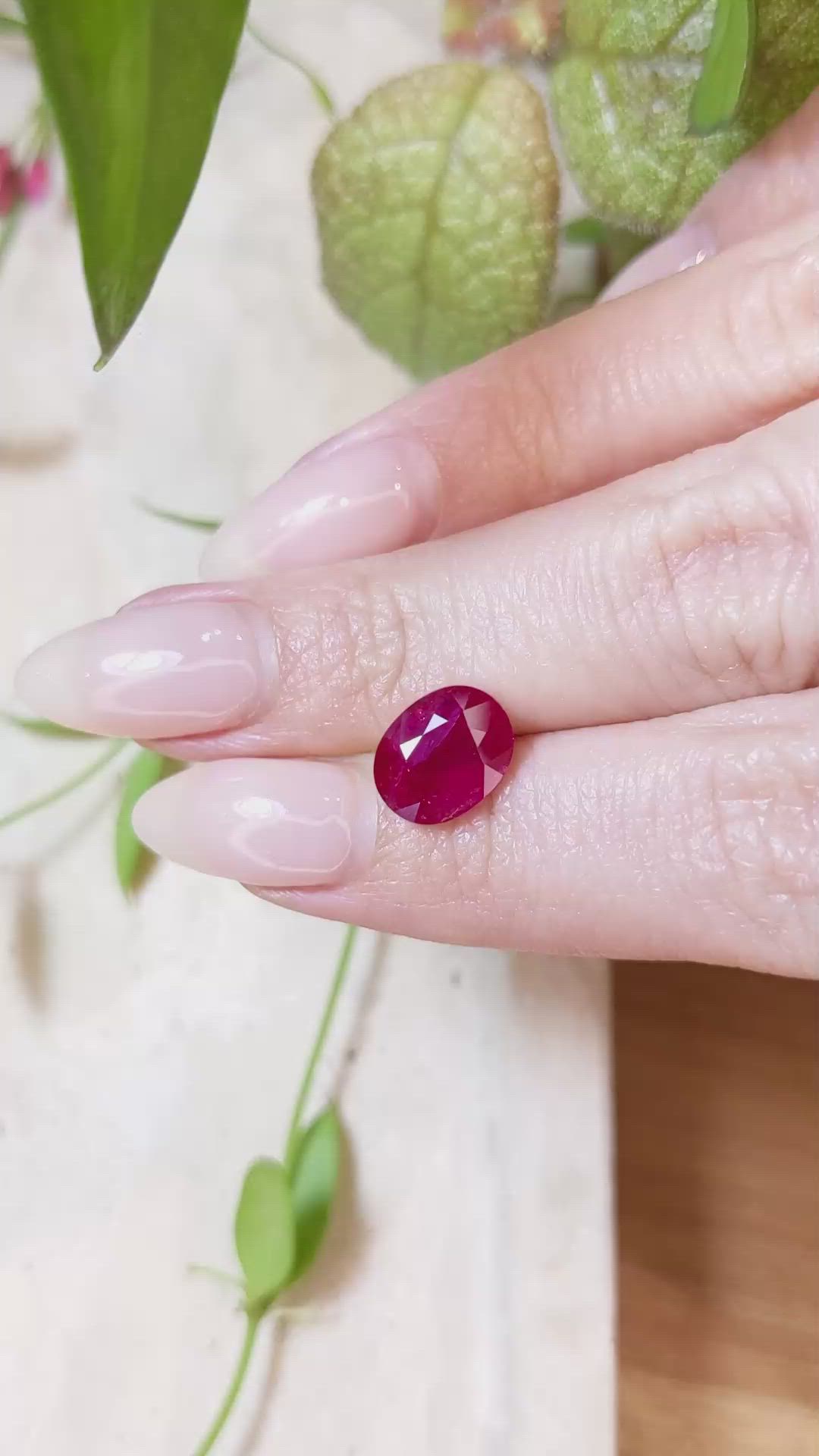

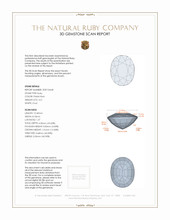
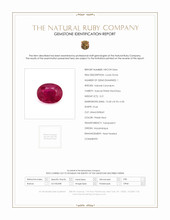
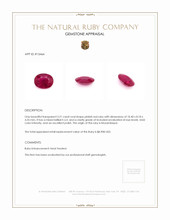
3.21 Ct. Ruby from Mozambique
This loose stone is available to ship now
Item ID: | R15464 |
|---|---|
Dimensions (MM): help | Length: 10.4 Width: 8.18 Height: 4.35 |
Weight: | 3.21 Ct. |
Color: help | Pinkish Red |
Color intensity: help | Vivid |
Clarity: help | Included |
Shape: help | Oval |
Cut: | Mixed Brilliant |
Cutting style: | Faceted |
Enhancements: help | Heat Treated |
Origin: help | Mozambique |
Per carat price: help | $2,775 |
This oval 3.21 carat ruby measures 10.40 by 8.18 by 4.35 millimeters and presents as a transparent, eye visible included stone, cut in a mixed brilliant configuration that balances color saturation with optical performance. The mixed brilliant cut here employs a brilliant facet arrangement on the crown combined with modified step and pavilion facets designed to maximize face up brilliance while retaining weight, resulting in lively scintillation across the table and crown facets. The measured depth is approximately 4.35 millimeters, producing a depth ratio of about 46.8 percent relative to the average of the length and width, a proportion that produces a bright face up appearance and a slightly lighter face tone than deeper ovals of comparable saturation. Clarity grading is included at eye level, which is typical of natural rubies where internal silk and discrete crystal inclusions are present, and the surface polish has been executed to an excellent standard yielding crisp facet junctions and even light return. The stone is heat treated, a widely accepted enhancement for ruby that reduces silk and stabilizes color, and provenance is disclosed as Mozambique, represented by The Natural Ruby Company.
Color evaluation identifies the primary hue as red with a discernible pinkish overtone, falling into a vivid intensity classification that communicates strong saturation without significant brown or orange modifiers. Face up the stone displays a clean red core with pinkish accents toward the facet edges and windowing that highlights the mixed cut geometry, the relatively shallow depth amplifying brightness while maintaining the vivid chroma. In practical viewing conditions the stone demonstrates directional color variability typical of corundum pleochroism, with slightly different red to purplish red nuances visible when rotating the stone under white light. Given its vivid grade and pinkish red hue, this ruby favors settings and lighting that allow the crown facets to dominate the visual effect, as the mixed brilliant schema promotes sparkling reflections instead of absorbing light into a darker tone.
When compared to classic ruby sources the hue and tonal character of this Mozambique specimen can be positioned with precision. Mogok and other prime Burmese localities are renowned for pure red hues with a cool blue undertone often described as pigeon blood red, typically presenting at a slightly deeper tone and with exceptional saturation that can outcompete many other sources. By contrast this Mozambique ruby leans a touch more pink in hue and exhibits a slightly more lively face up brightness, making it visually closer to top quality Burmese material yet distinct in its pinkish bias and slightly shallower tone. Rubies from Thailand frequently show a stronger brownish red element and a darker, more subdued face up appearance, which makes this Mozambique stone appear more vivid and less brown than typical Thai material. Madagascar and certain East African deposits produce stones with variable hues ranging from orangey red to purplish red, and within that spectrum Mozambique material often sits in the desirable zone where saturation is high and brown or orange modifiers are minimal, resulting in a clean, vivid pinkish red that competes favorably in face up presence while remaining more affordable than comparable Burmese pieces.
From a clarity and treatment perspective the internal characteristics observed are consistent with natural corundum origin and the disclosed heat treatment. The included grade at eye level indicates that inclusions are visible without magnification, yet they do not unduly detract from transparency or color intensity because the cutting strategy prioritized retention of weight and color. Typical inclusion types for this origin include fine silk and isolated crystalline features, which when partially dissolved or reorganized by heat treatment can improve apparent clarity and color uniformity. The excellent polish allows facet reflections to remain sharp and contributes to strong scintillation, and the mixed brilliant pavilion preserves red saturation while preventing excessive darkening that a deeper pavilion would introduce. For mounting considerations the dimensions and oval profile make this an excellent candidate for a centered engagement ring or a statement pendant, where the balance between length and width conforms well to a variety of setting geometries and where prong or half bezel mounts will allow maximum light to enter the crown and highlight the vivid pinkish red hue.
At The Natural Ruby Company we present this 3.21 carat Mozambique ruby as an example of modern lapidary strategy paired with high material quality, and we emphasize transparent disclosure of origin and enhancement. The combination of a mixed brilliant execution, vivid color intensity, transparent body, included clarity at eye level, and excellent polish yields a gem that displays strong face up color with lively brilliance, and that compares favorably to more costly Burmese specimens while avoiding the darker brown tonalities found in some Thai material. For clients seeking technical documentation we can provide detailed imaging and laboratory reporting options, and our team can advise on optimal setting orientation to preserve face up saturation and minimize the visual impact of internal features. Contact The Natural Ruby Company for further spectral data, directional color photographs, or custom mounting recommendations that will showcase the specific hue and tone of this attractive Mozambique ruby.

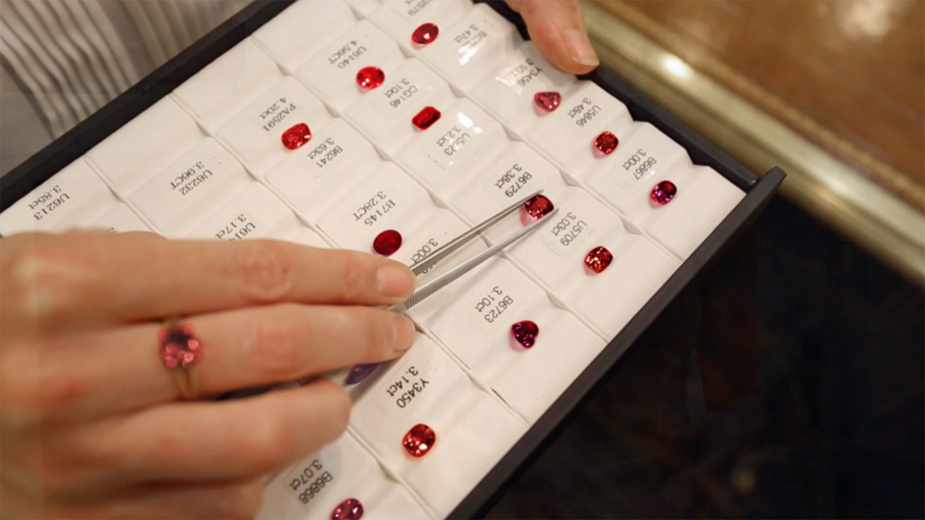

Other Rubies You May Like
